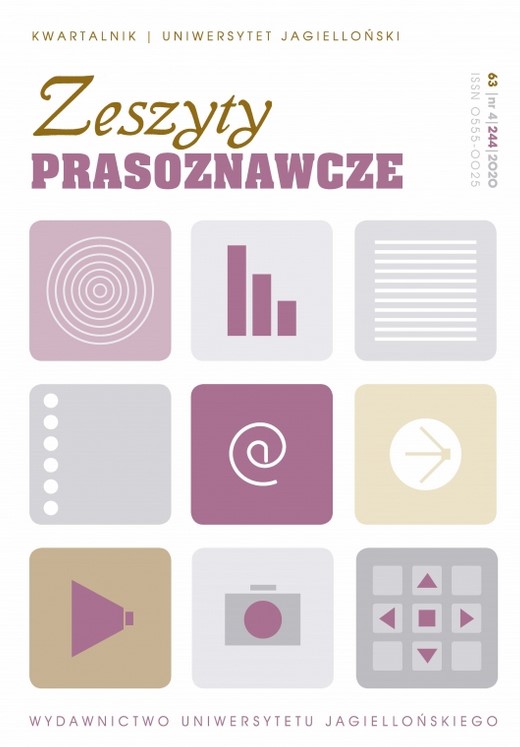Digital Trauma: The Reality and The Mean World. Media Coverage of Black Lives Matter Protests during Covid-19 Pandemic in the USA
Digital Trauma: The Reality and The Mean World. Media Coverage of Black Lives Matter Protests during Covid-19 Pandemic in the USA
Author(s): Mykaila YoungSubject(s): Media studies, Human Rights and Humanitarian Law, Health and medicine and law, Social Informatics, ICT Information and Communications Technologies
Published by: Wydawnictwo Uniwersytetu Jagiellońskiego
Keywords: eyewitness media; USA; reporters; #BlackLivesMatter; COVID-19; trauma; digital trauma; graphic content;
Summary/Abstract: This article seeks to establish to what extent does eyewitness user generated content influence social movements and feelings associated with vicarious/secondary trauma. Working with a sample of perspectives from activists, reporters, nurse practitioners, literary texts, and media articles this article explores the working hypothesis that eyewitness news and media narratives both play a role in cultivating environments of fear, mistrust, etc. that lead to vicarious/secondary trauma with a focus on the recent #BlackLivesMatter protests in the USA in June 2020. This article builds upon previous research facilitated by the Dart Center for Journalism and Trauma within the theoretical framework of George Gerbner’s Mean World Syndrome that focused on the influence of effects of violent media on individuals’ attitudes. This article explores the similar effects that the digital eyewitness uncensored viral video of George Floyd’s death had in producing feelings associated with vicarious/secondary trauma among a sample of viewers that were directly involved in the nationwide protests during the global pandemic in America. The value of the article is twofold: it presents up to date research material obtained while conducting interviews with journalists who covered the protests and activists involved with the current social movements in America; it highlights the challenges to broadcasting for reporters and newsroom workers during the COVID-19 pandemic. The results of the interviews show that nearly all the respondents associated distressing content with feelings and emotions related to trauma induced anxieties and fears as a result of eyewitness media. Positive news coverage was reported as having a positive effect that encouraged people to understand the historical context of the Black Lives Matter movement. Most of my interviewees found distressing images “numbing” or too familiar. The article shows the media consumers’ feelings developed as a result of “virtually inescapable” graphic content.
Journal: Zeszyty Prasoznawcze
- Issue Year: 2020
- Issue No: 4 (244)
- Page Range: 123-140
- Page Count: 18
- Language: English

